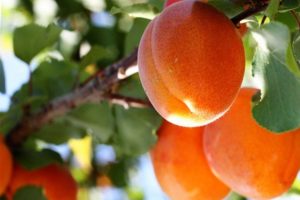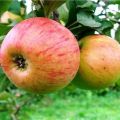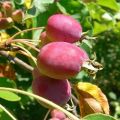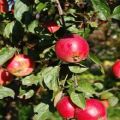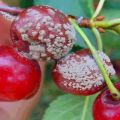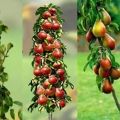Description of the apricot variety Alyosha and characteristics of disease resistance
Alyosha, a winter-hardy apricot of early ripening, is successfully cultivated in the Moscow region, Pskov, Leningrad regions and other areas with a temperate climate. The variety is improved by the method of free pollination by seedlings of this type of seedlings of the 2nd and 3rd generation. The Alyosha apricot variety is recognized by the scientific community as suitable for cultivation in central Russia.
The history of the origin of the variety
The famous biologist Larisa Andreevna Kramarenko and professor, Doctor of Biological Sciences Alexei Konstantinovich Skvortsov in the main Botanical Garden. N.V. Tsirana (in Moscow) developed a new variety of apricot.
From the works of L.A. Kramarenko, you can find out what rootstocks for grafting apricots should be used to improve their characteristics for winter hardiness, resistance to wet and dry growing conditions. According to her authoritative opinion, the best apricot rootstocks are Armeniaca vulgaris - common apricot and mandshurica - Manchurian.
It is almost impossible for gardeners to purchase them on their own, not a single nursery supplies these seedlings to specialized retail outlets.
With more opportunities than hobby gardeners, two renowned scientists have optimized the native southern plant for a temperate climate. Work on the plant species bred in the Botanical Garden of Moscow State University has continued since 1988. Only in 2004 was it entered into the register of fruit trees of the Russian Federation.
Description
The description of a fruit tree variety consists of two parts, both of which are important for gardeners. The characteristics of the plant itself determine the ease of care and the need for pinching, pruning branches, preventive treatment preceding the flowering period:
- height of an adult tree is 4 meters;
- the crown is branched, dense, rounded;
- spreading branches are evenly spaced around the trunk, their ends describe a circle of 4 m;
- the first fruits appear in the 3rd year from the moment of transplantation to a permanent place;
- early flowering, white-pink large flowers;
- disease resistance is average.
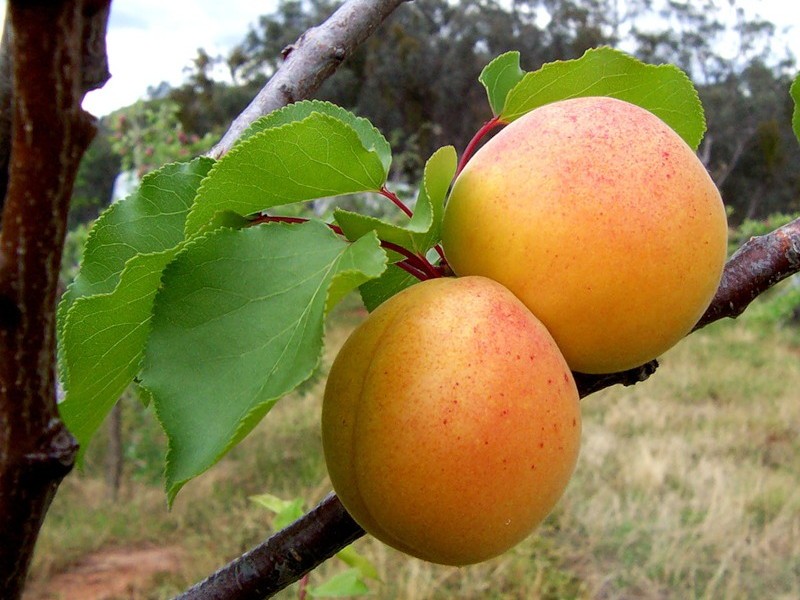
For lush flowering, Alyosha apricot is used as an ornamental plant for landscape design. Equally important is information about the qualities of the fruit:
- fruits are not large, 15-20 g;
- the color is bright yellow;
- rounded shape;
- scanty pubescence on smooth skin;
- the taste is sweet and sour;
- keep marketable for 2-3 days.
The fruits are suitable for canning, making preserves, jams, compotes.They are unusually good when fresh.
Specifications
The characteristics of the variety influence the choice of planting site, the need to protect the seedlings from the leeward side, to plant them as a single variety or next to a pollinator plant.
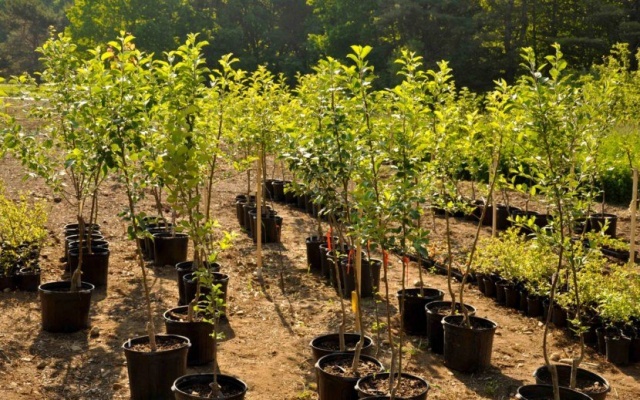
Drought resistance, winter hardiness
Variety Alyosha winters well in severe frosts. This practically does not affect the condition of the tree bark, the condition of the buds and the yield. Late protracted spring with nighttime temperature drops below 0 ° C is the main reason to delay flowering. Timely whitewashing of the trunk will help with this. The trees of this variety can withstand the absence of water.
A prolonged period of drought may slightly reduce the palatability of the fruit, but they will remain on the branches and will be there until the stage of full ripening.
Pollination, flowering period, ripening time
Alyosha's apricot tree is self-sufficient. For its pollination, no other apricot growing in the immediate vicinity is required, unless this is justified by the need to pollinate a neighboring fruit tree. Fruits ripen in the third decade of July. Apricot trees of this variety are excellent pollinators for varieties that bloom with them at the same time - in mid-May.
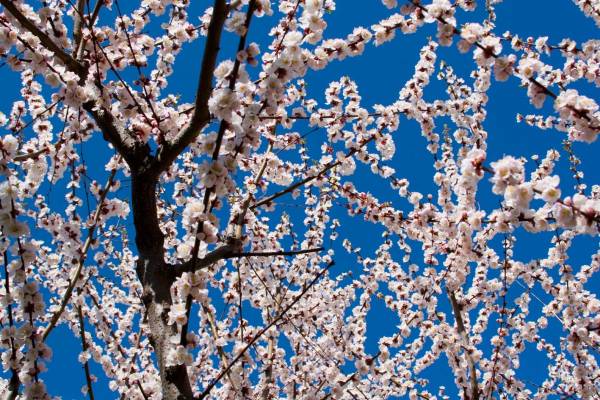
For reference: flowering can begin 1-2 weeks earlier or later, which depends entirely on the climate characteristics of the area where a particular tree grows.
Disease and pest resistance
Improper preventive preparation, unfavorable neighborhoods is a strong threat to the apricot tree, which belongs to the middle class of resistance to fungal, viral and other infections.
The proximity to the plum makes it a tasty target for insects - aphids and leafworms. The consequences of the action of the leaf roll can be confused with more serious diseases to which drupe trees are susceptible. Treating the tree from pests before flowering is a mandatory precaution.

Advantages and disadvantages of the variety
From the reviews of gardeners of the Moscow region, one feature of the variety becomes clear - ripe fruits fall off on their own. This can be attributed to both the advantages and disadvantages:
- you do not have to come up with ways to get fruits from the upper branches;
- only ripe, tasty fruits appear on the ground;
- in case of a fall, deformation, loss of presentation is possible.
The biggest plus is self-sufficiency. The downside is that the plant is at risk for fungal and viral infections of neighboring trees.
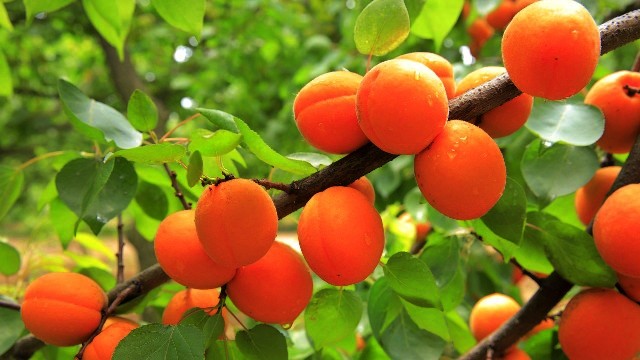
Features of planting and care
Before planting, in the fall, you should enrich the land. When planting in loam, the soil must be enriched and softened by adding ash. Both during the preparation of the planting site, and every 4-6 years, the soil will have to be enriched with organic fertilizers - grass humus, food waste, sprinkled with layers of peat. This is the need for a compost pit on the site, which will be constantly replenished by weeds, fallen leaves, and unsuitable fruits for food.
Disease and pest control
Prevention and compliance with the rules for the selection of plant neighborhoods is the best protection for trees with medium immunity. After harvesting and before flowering, preventive spraying with special compounds for fruit trees is performed. The concentration of the active substance in the solution for prophylaxis is small, it will not affect the quality of the crop.
If you have to take drastic measures in the event of a disease after the formation of ovaries on the tree, the apricots will be unsafe for human health. The trunk of the tree must be whitewashed to a height of 1-1.2 m from ground level - this will protect against ants and other insects that want to settle in the bark of the tree.

